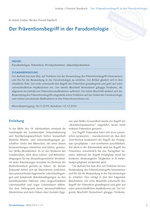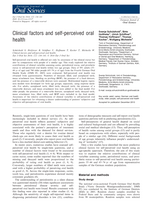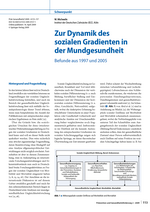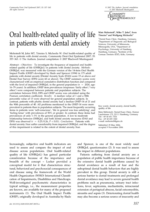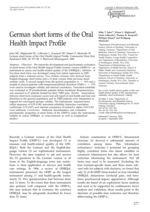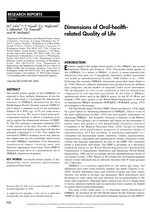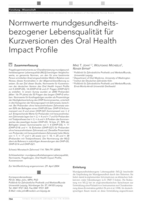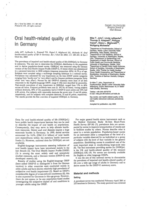
Medizinsoziologie und Gesundheitskompetenz
Autoren
John, Mike T.
Koepsell, Thomas D.
Hujoel, Philippe
Miglioretti, Diana L.
LeResche, Linda
Micheelis, Wolfgang
Schlagwörter
Demographic factors
Denture status
Oral Health
Oral health-related quality of life
Risk factors
Publikation — Zeitschriftenbeiträge
Titel
Demographic factors, denture status and oral health-related quality of life
Titel kurz
Community Dent Oral Epidemiol
Titel Ausgeschrieben
Community Dentistry and Oral Epidemiology
ISSN
0301-5661 (Print); 0301-5661 (Linking)
Jahr
2004
Ausgabe
32
Issue
2
Seitenzahl
125-132
Erscheinungsdatum
01.04.2004
Demographic factors, denture status and oral health-related quality of life
OBJECTIVES: This study investigated the association between denture status, demographic factors, and oral health-related quality of life (OHRQoL).
METHODS: OHRQoL was measured using the German version of the Oral Health Impact Profile (OHIP-G, 53 items), which was administered in a personal interview to 2050 subjects (60% of eligible subjects responded) 16-79 years of age in a national survey. Median regression was used to analyze the influence of denture status (no, removable, complete dentures), age, gender, education (less than 10 years of schooling, 10-12 years, more than 12 years), and residential area (rural, urban) on the OHIP-G summary score.
RESULTS: In bivariable analyses, compared to the base category, the OHIP-G median increased 8.0 U for subjects with removable dentures, 20.0 U for subjects with complete dentures, 1.7 U for each 10-year age period, 2.0 U for men, 3.0 U for less than 10 years of schooling (compared to > or =10 years.), and 1.0 U for urban areas (P < 0.05 for all effects except for residential area). In the multivariable analysis, compared to subjects without dentures, subjects with removable dentures had a 7.5 (95% CI: 5.2-9.8) higher OHIP-G median and subjects with complete dentures had a 18.5 (95% CI: 14.7-22.4) higher median when demographic variables were controlled. No demographic variables were statistically significant except for residential area (P = 0.04).
CONCLUSIONS: Denture status was a stronger predictor for impaired OHRQoL than demographic variables and rendered age and education almost negligible in their influence on OHRQoL.

